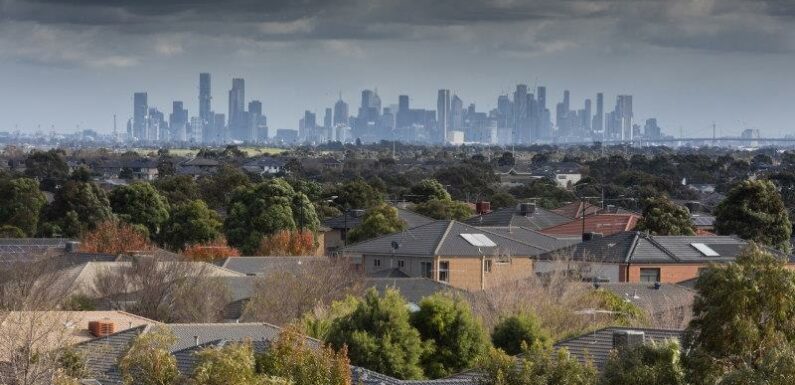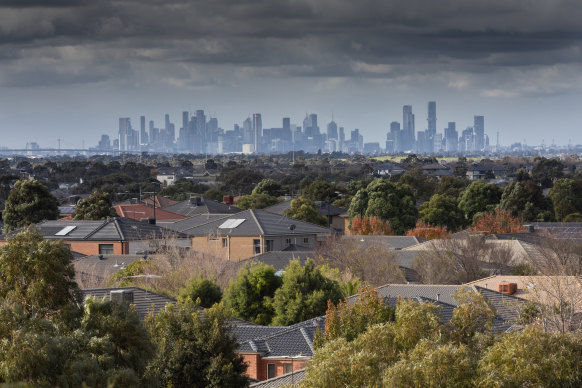
Ratepayers will fork out up to 3.5 per cent more next year, but councils say they are still wrangling with the hit from surging inflation and the looming impact of the Andrews government’s signature kindergarten policy.
The Victorian government on Thursday announced its cap on rate increases for all councils for the 2023/24 financial year – a significant rise from the 1.75 per cent cap imposed this financial year. Annual inflation, however, hit 7.3 per cent nationwide in September.
Victorian councils cannot increase rates by more than 3.5 per cent from July 1 next year – a jump from a 1.75 per cent cap last year.Credit:Jason South
The state’s peak ratepayer group said the increase for next financial year was “excessive” and councils could avoid inflation pressure simply by making wiser spending choices and dealing with higher public sector wages.
Municipal Association of Victoria president David Clarke said councils wanted a 4 per cent cap – as recommended by the independent Essential Services Commission last week.
But he said 3.5 per cent was “reasonable” given inflation was expected to be closer to that level next year.
“The real challenge obviously is what we’ve got this year because [the rate cap] was 1.75 per cent and inflation is running at about 7 per cent,” he said.
City of Melbourne councillor Philip Le Liu, who is the council’s finance portfolio lead, said the new rate cap was “well below the rate of inflation, which has seen the cost of providing services to the community rise significantly”.
Darebin Mayor Julie Williams said the new cap was “a welcome increase on previous years”.
Clarke, a Pyrenees Shire councillor in Victoria’s west, said the association’s main focus was on securing funding in the next state budget to provide services, such the Andrews government’s extended kinder promise for three-year-old and four-year-olds. Councils are a key provider of early childhood education.
The Victorian government plans to make every Victorian four-year-old child entitled to a free, 30-hour-a-week program, up from 15 hours. It will also offer $2500 subsidies in three- or four-year-old kinder and offer 5000 new, lower-cost childcare places at 50 new state-run centres.
“This [rate cap] is reasonable if the government comes to the party and then actually provides some more of the resources to do the things we need,” Clarke said.
“The two big ones are maternal and child health … and the second one is all the capital cost around the build for extended three-year-old and four-year-old kinder. The bill we think is around $800 million and the state has put aside about $350 [million] to date.”
Clarke renewed calls for a review of the rate cap system to reflect the differences in how councils in regional, suburban and inner-city Victoria operate with various levels of population growth and thus revenue.
“It treats us like we’re all the same and we’re not,” Clarke said.
He added in a separate statement: “Each year councils spend between 20-40 per cent of their budgets on new infrastructure, be that roads, aquatic facilities, streetscapes, or playgrounds and parks.”
“In the current year, costs for these works have escalated in the order of 35 per cent, something the rate cap doesn’t deal with, hence the need for the review.”
However, Ratepayers Victoria vice president Dean Hurlston said rising costs were not hitting local governments’ bottom lines because councils sign fixed price contracts, meaning their suppliers were burdened with this year’s inflation increases.
“We think this is an excessive increase,” Hurlston said. “One of the other things we also know is what’s really driving council expenditure is wages.”
He said inefficient councils should be making better spending choices, rather than cutting services such as aged care and rubbish collection.
“The reason that rate capping was introduced is that, under no caps before, councils on average increased rates [by] 6.5 per cent or more, year in, year out,” Hurlston said.
Hurlston also said the government had not consulted adequately with Victorians about the cap.
Local Government Minister Melissa Horne said the rates cap considered “higher inflation and the need to protect Victorians from uncontrolled rate hikes, while ensuring councils can continue to deliver vital community services.”
The Morning Edition newsletter is our guide to the day’s most important and interesting stories, analysis and insights. Sign up here.
Most Viewed in National
From our partners
Source: Read Full Article
